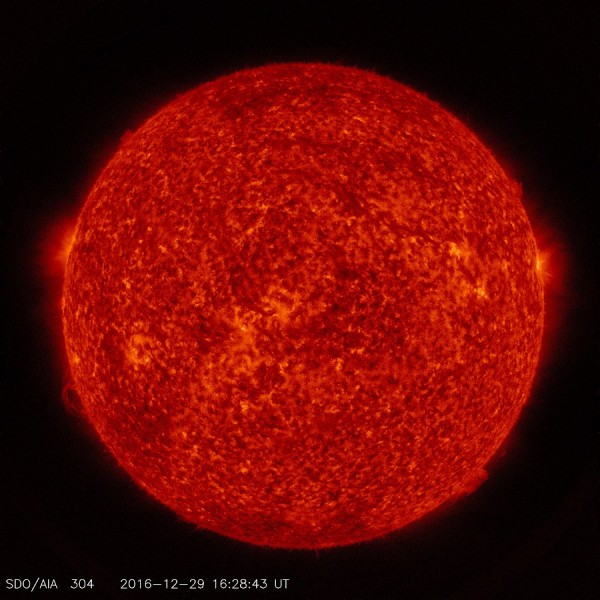By Ana Verayo, | January 02, 2017

Images from NASA's Solar Dynamics Observatory have a time stamp showing Universal Time on it. (NASA/SDO)
During New Year's Eve, an extra second was added to make the final minute of 2016 become 61 seconds longer.
Since Earth's rotation has been slower through the years, the most accurate clocks in the world known as atomic clocks have become out of sync with the slowing down of the planet's spin.
Like Us on Facebook
Countries which apply the Coordinated Universal Time such as the United Kingdom, Ireland, Iceland and some West African nations added an extra second during the last minute before the midnight of New Year. For the rest of the world, this leap second will be determined by their time zone and how its is affected by the UTC.
This extra second is known as a leap second and has been added before to international timekeeping. Leap years occur every four years, however, leap seconds are added as the last second on midnight of June 30 or December 31 on the years they are required.
According to the International Earth Rotation and Reference Systems Service (IERS) at the Paris Observatory, this extra second or leap second helps us to be aligned with astronomical time that is also irregular and relative to Earth's rotation.
The UTC also makes it extremely stable thanks to atomic clocks set since 1967. The IERS is crucial for synchronizing global time with the Earth's rotation.
Scientists also confirmed that while the planet's rotation is indeed slowing down, this is not a regular event. Earth's spin apparently slows down and speeds up which makes it necessary for international timekeepers to monitor this.
This irregular rotational speed patterns is caused by lunar gravitational forces that also affects ocean tides.
In turn, astronomical time or the length of an Earth day becomes out of sync with 400 hyper accurate atomic clocks which are scattered around the globe.
In 1972, leap seconds were first introduced which added 10 extra seconds to the UTC. Before December 31, 2016, the last leap second was added in June 30, 2015.
-
Use of Coronavirus Pandemic Drones Raises Privacy Concerns: Drones Spread Fear, Local Officials Say

-
Coronavirus Hampers The Delivery Of Lockheed Martin F-35 Stealth Fighters For 2020

-
Instagram Speeds Up Plans to Add Account Memorialization Feature Due to COVID-19 Deaths

-
NASA: Perseverance Plans to Bring 'Mars Rock' to Earth in 2031

-
600 Dead And 3,000 In The Hospital as Iranians Believed Drinking High-Concentrations of Alcohol Can Cure The Coronavirus

-
600 Dead And 3,000 In The Hospital as Iranians Believed Drinking High-Concentrations of Alcohol Can Cure The Coronavirus

-
COVID-19: Doctors, Nurses Use Virtual Reality to Learn New Skills in Treating Coronavirus Patients







